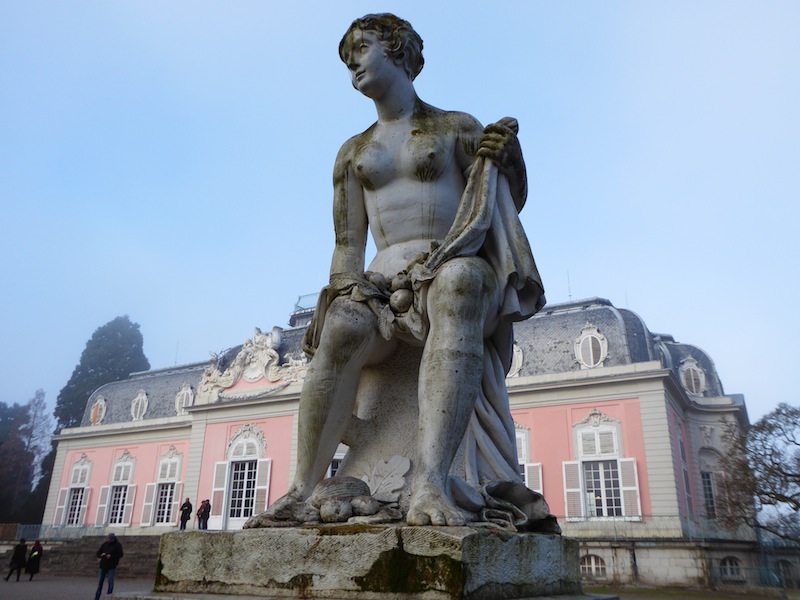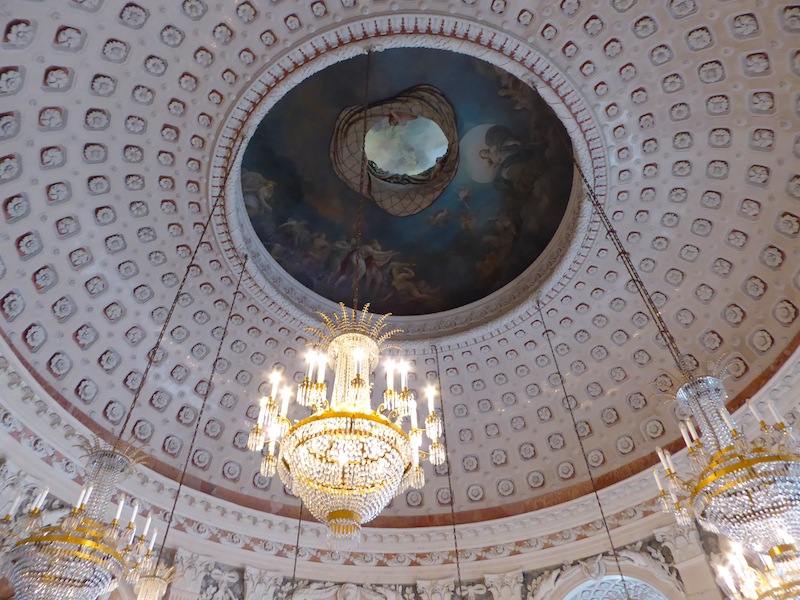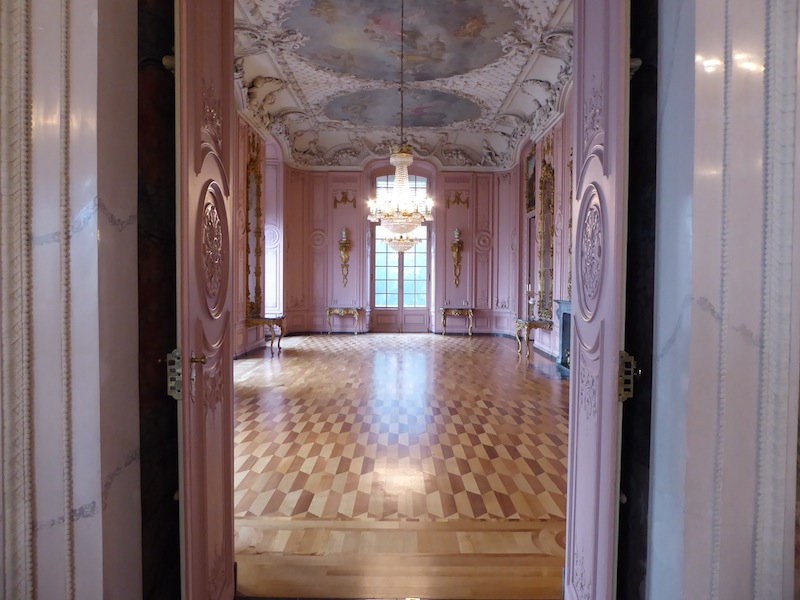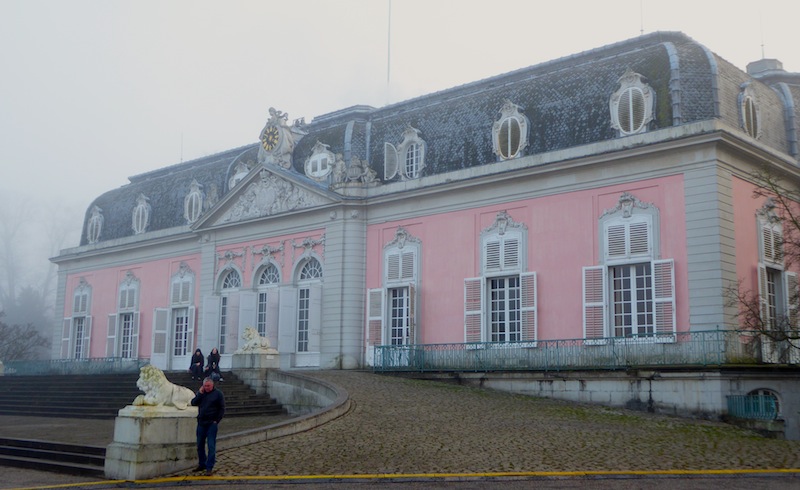Dusseldorf isn’t blessed with palaces and historic houses but it does have Schloss Benrath, a summer retreat built for royalty in the late 18th century.
It was our principal destination on a cold and misty December Saturday. Near our city centre hotel, the Hofgarten park looked fresh and inviting, its leaf-less trees throwing long shadows over the frost-coated grass, and we stopped over the road at Patisserie Passion for a leisurely breakfast. The palace was 30-minutes away to the south, reached by a tram that took us from door to door via the city’s suburbs and industrial estates. The further we went, the thicker the fog became.
The compact palace sat pink and proud in front of an ornamental lake deep in the Dusseldorf district of Benrath. Two curved wings, which would’ve served as stables and service quarters but now house a couple of museums, stood apart and provided a pleasing symmetry.

The inevitable Christmas market had been set up on the edge of the lake and we took the opportunity to warm up and feast on chunky German sausages. Behind the main palace building – the Corps de Logis – we found the winter-ravaged gardens and a rectangular reflecting pond or Spiegelweiher, in which ducks and swans were fighting a losing battle with the icy surface. No doubt all that water (the Rhine wasn’t far away either) was partly to blame for the mist and fog that swirled around.
We made our way to the house for a tour, and donned huge felt slippers to protect the beautifully crafted marble and wooden floors. Our guide was a young woman whose occasional admonitions to the parents of a couple of noisy children came across in an unfortunate Himmleresque way thanks to her lack of familiarity with English. However, she was charming enough to the rest of us, knew her subject and helped interpret the history of the building and its owners.

Schloss Benrath replaced an earlier royal house (excellent models of both buildings could be seen in the basement) and the work was ordered by the Elector Palatine Carl Theodor. It was completed in the 1770s and today features a modest collection of state rooms – all stucco and putti, fine art, extravagant decoration and pieces of grand furniture – as well as more humble rooms on the upper floors. The highlight was a spectacular double dome in one of the reception rooms. High above, musicians would perform out of sight but not out of earshot…
However, it turns out that the house wasn’t really used much by the Elector and his family because by then he’d inherited more land and finer palaces elsewhere in Germany. Later it was home to Napoleon’s cronies during the French leader’s rampages across Europe and then to minor Prussian royalty.

Outside it was bitterly cold so we made our way home on the tram, meeting a gossipy local woman of a certain age who proudly told us all about her son, who works as an architect in London, and her summer home in Majorca.
We got off the tram to explore the fancy food market at Carlsplatz but by that point we were both frozen to the core and many stalls were packing up for the day. We walked through the busy streets of the Altstadt, through the Christmas markets and stopped at one in Marktplatz for a warming gluhwein and the most delicious of snacks – a revelation of a potato pancake known as a kartoffelpuffer.
Come evening our quest for food was scuppered at every turn. We walked among yet more atmospheric market stalls but the restaurants were rammed to the gills. It was only back at our eatery from Friday night – Ohme Jupp – that we found a table. Not that I had any complaints about the food.
We stayed local for drinks in a small but perfectly formed pub. The pilsner flowed but I also tried the Dusseldorf speciality of altbier, a curious darker brew that’s usually served in small glasses and that seems to be drunk by absolutely anyone with a pulse in the city. Vaguely herby, fresh and cold, it was pleasant enough but I won’t be putting in an order…

